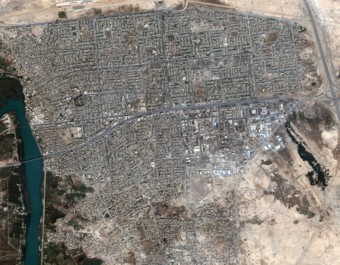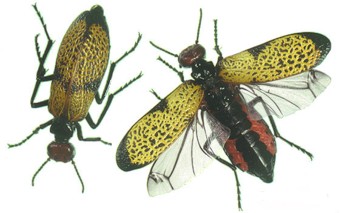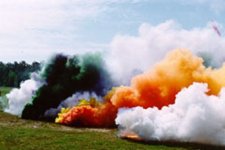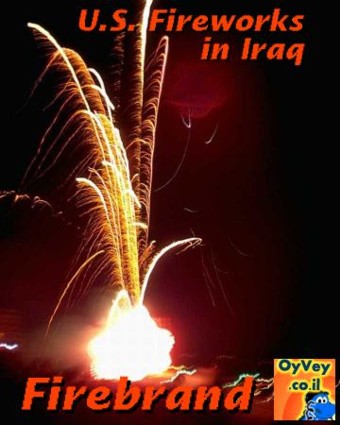ALCHEMISTRY:
COMPOSITION
names
pyrotechne
tunic
chronic
meat
crude
thrown fire
in law
love's fire
illuminated
tourist
texts
sources
versions

It was discovered that heated vinegar or soured wine could cause marble and limestone walls to disintegrate. Alum (double sulphate of aluminium and potassium) was known ot be a fire retardant.
Muslim military manuals recommend a paste of talc, eggwhites, gum, and salamander skin (i.e. asbestos).
ANTIQUE SMOKES
Chinese smoke-ball: made of powdered aconite root, wolfbane (species of monkshood), croton beans (purgative which causes blisters and pustules), arsenic, hemp (hallucinogen), blister beetles, sulphur, charcoal and resin.

source: Adrienne Mayor, Greek Fire, Poison Arrows, and Scorpion Bombs
PYR AUTOMATON
Limepowder, or roasted limestone becomes calx, caustic quicklime or calcium oxide. Sprinkled with water, it becomes slaked lime (calcium hydroxide), which can spontaneously combust.
Julius Africanus (b. 170 CE), gives a recipe:
"Automatic fire is composed of equal parts of native sulpur, rock salt, incense, thunderbolt stone, or pyrites, ground in a black mortar in the mid-day sun, and mixed with equal parts of the resin of the blackksycamore and liquid asphalt of Zakynthos to a greasy paste. Then some quicklime is added. The mass must be stirred at mid-day with care and the body protected, since the composition easily inflames. It must be kept in bronze boxes with tight covers, protected from the rays of the sun until it is wanted. If the engines of the enemy are to be burnt, they are smeared with it in the evening, and when the sun rises all will be burnt."
GREEK FIRE
unknown.
“carcass composition”: liquid petroleum, naphtha, burning pitch, sulphur, resin, bitumen. saltpetre and turpentine. tallow and crude antimony. possible active ingredients: calcium phosphide (made by heating lime, bones and charcoal; releases phosphine on contact with water, which ignites spontaneously). colloidal suspensions of metallic sodium, lithium, potassium, or quicklime in a petroleum base.
"In sum, I don't see any trouble
at the Big End so long
as we keep the error-box empty, Now
take care of this communique
and what say
we double the order on the fireworks
of nostalgia
Gums & resins, brimstone
naphtha and the other bitumens
and uh more salt petre & sulphur
benzol & potassium, dont forget
the ducks grease
and pass me that dish of Radio poo
you got there by your elbow
and oh yes, one gross
CO2 pellets
a battery of HeNe lazers
one mobile Rulz Field Beam
What's that last item, Boss?
#19 inveigled
That's the sow, we'll
use it to hold the property lines
when the maribunta pour in..."
source: Adrienne Mayor, Greek Fire, Poison Arrows, and Scorpion Bombs
trans. J R Partington, A History of Greek Fire 8.
Ed Dorn's Recipe, Gunslinger, Book III
Naphtha: known since the 4th century BCE. distilled petroleum thickened with resins and sulphur.
base chemical compound (liquid) would have to be homogenous to flow smoothly through the delivery system to the nozzle.
Liber ignium of Marcus Graecus: 'Take pure sandarach resin 1 lb, liquid gum ammoniac 1 lb, grind together and put into a glazed earthenware jar closed carefully with philosophical lute. Put a fire below till it is melted. The sign of melting is this: the product will look like butter on a piece of wood inserted in it. Then pour over it 4 lb. of Greek pitch. The performance of this operation indoors is prohibited by reason of danger of fire. If you wish to operate on sea, take a goatskin bag and put in it 2 lb. of this oil if the enemy is near, more if he is distant.
"Another kind of fire for burning enemies wherever they are. Take petroleum, black petroleum, liquid pitch, and oil of sulphur. Put all these in a pottery jar buried in horse manure for fifteen days. Take it out and smear it with crows which can be flown against the tents of the enemy. When the sun rises and before the heat has melted it the mixture will inflame. But we advise that it should be used before sunrise or after sunset."
"Note that every inextinguishable fire can be extinguished or stifled by four things, namely strong vinegar, or by stale urine, or by sand, or by felt soaked three times in vinegar and thoroughly dried; it stifles the said fire."
"After finely powdering dissolve in linseed oil or in laurel oil which is better. Then put into a reed or hollow wood and light it. It flies away suddenly to whatever place you wish and burns up everything."
"Note. --The case for flying fire should be narrow and long and filled with well-pressed powder. The case for making thunder should be short and thick and half filled with the said powder and at each end strongly bound with iron wire."
Zambac: Arabic name for essential oil, such as oil of jasmine, although the usual meaning is "the white lily or the iris".
("Similar phosphorescent compositions from fireflies (noctilucae), the biles of various animals, juirces of plants, etc., are described in following paragraphs; they are often fanciful, e.g. a light which makes a house look like silver is made by drying a black or green lizard, cutting off the tail and taking from it mercury (argentum vivum), which is used in an iron or glass lamp instead of oil.")
"If you dip a finger in it and set it on fire it burns like a candle but produces no injury, and if you put a burning candle in this water it is not extinguished. Note that the water which comes over first is good and fiery, that later is not useful in medicine. From the first is made a wonderful collyriium for spots and films on the eyes."
"A wonderful experiment which allows men to walk in fire without injury or to carry fire or hot iron in the hand. Take juice of double mallow and white of egg and flea-wort seed and lime and powder them. Prepare with white of egg and radish juice. Anoint your body or hands with this composiiton and let it dry. Repeat the treatment and then you will be able boldly to undergo the test without damage."
Marcus Graecus, Liber Ignium, trans. Partington 45-50
Sodium has a melting point of 371°K or 97.85°C and Phosphorus a melting point of 317°K or 43.85°C. Sodium/water chemical reaction: 2 Na + 2 H2O > 2 NaOH + H2 produces a bright red flame
Phosphorus/Damp Air at room temperature reaction: P4(s) + 5O2(g) P4O10(s)
Reaction of Phosphorus Pentoxide in water leaves an acidic residue following a highly exothermic reaction and water vapor.
Phosphorus Pentoxide is used as a dehydrator due to the water evaporating property. Given that the low boiling point of the Sodium and the red flame, it is more highly probable that sodium was the additive.
PHOSPHOROUS
Phosphorus exists in four or more allotropic forms: white (or yellow), red, and black (or violet). Ordinary phosphorus is a waxy white solid; when pure it is colorless and transparent. White phosphorus has two modifications: alpha and beta with a transition temperature at -3.8oC. It is insoluble in water, but soluble in carbon disulfide.
Never found free in nature, phosphorus is widely distributed in combination with minerals.
Phosphate rock, which contains the mineral apatite, an impure tri-calcium phosphate, is found in Russia, Morocco, Florida, Tennessee, Utah, Idaho, and elsewhere.
White phosphorus may be made by several methods. By one process, tri-calcium phosphate, the essential ingredient of phosphate rock, is heated in the presence of carbon and silica in an electric furnace or fuel-fired furnace. Elementary phosphorus is liberated as vapor and may be collected under phosphoric acid, an important compound in making super-phosphate fertilizers.
DISCOVERY
Johann Kunckel (or Kunkel) (1630-1703) attracted attention also as the discoverer of phosphorus. This substance had really been prepared by a man named Brand. This coming to Kunckel's knowledge, he determined to obtain from him the process and went from Dresden to Hamburg to see him. Finding manifest disinclination to impart the secret, Kunckel wrote a note to a Dresden friend, a Mr. Krafft, telling him of the situation. Krafft, according to Kunckel's story, did not answer him, but journeyed to Hamburg and purchased the secret from Brand for 200 thaler, on the condition of Brand not revealing that fact to Kunckel, after which he returned to Dresden as he had come, Brand telling him he had not succeeded in repeating his previous work. Kunckel, however, found out that urine was the source of the preparation and, by his own labours, prepared the substance. He published a book upon phosphorous and its properties in 1678, in which, however, he gives no details of its preparation.
At about the same time, Robert Boyle had discovered phosphorous, and, in 1680 (September), he described its preparation in a paper deposited witht he Royal Society but not published until 1692. In the same year, 1680, however, he published papers on the Aerial Noctiluca in which he speaks much of the samples brought by Mr. Krafft to show King Charles. Boyle met Krafft and states that Krafft gave him no information as to its preparation other than that it was derived "somewhat that belonged to the body of man." This information gave him a valuable clue to limit his experiments to a fw substances and a further hint he received later from a stranger, "countryman, if I mistake not, of Mr. Krafft," who referred to the high degree of heat necessary for the operation. The method which Boyle used was to distil evaporated urine with about three times its weight of fine sand at high temperature for several hours, condensing under water the eventually distilling phosphorous.
...The process used by Kunckel and Boyle gives slight yield and phosphorous was an expensive product in their day. Only after Gahn or Scheele (about 1771) had shown that bones contain phosphoric acid, was discovered the process in which the syrupy liquid produced by removing a great part of the calcium by nitric or sulphuric acid is reduced by ignition with carbon. By this method phosphorous was obtained at a cost which removed it from the class of expensive rarities, and gave it wide industrial possibilities.'

John Maxson Stillman, The Story of Alchemy and Early Chemistry (New York: Dover, 1960), pp. 418-20.
Boyle distinguishes two types of phosophorus: 'Those that may be stil'd Natural, as Glow-worms, some sorts of rotten Wood and Fishes, and a few others, and Those that are Artificial.' Phosophorus is distinguished by its 'absence of sensible heat'.
Phosphorescent objects include: those which 'shine only by the help of External Illustration', glow-in-the-dark (like the Bolonian Stone). But that stone was now rare, and Balduinus had not revealed how to make Phosphorus Hermeticus. Furthermore, these 'would appear crack'd, and lose their vertue of being excited by the beams of Light' after some days.
But Noctiluca does not need first to be illuminated in order to glow. It is of a 'viscous Texture, not very unlike the Gum of Cherries, and some others newly taken from the Tree'.
Boyle reveals his intention to Kraft to investigate phosphorus. Kraft 'confest to me at parting, that at least the principal matter of his Phosphorus's, was somewhat that belong'd to the Body of Man.' 'But there being divers parts of the Humane Body that have been taken to task by Chymists, and, perhaps, by me as carefully as by some others, my choice might have been distracted between the Blood, the solid Excrements, the Bones, the Urine, and the Hair, of the Humane Body.' He has a stock of urine prepared, and begins.
'In this Narrative I have bene the more particular, that it may shew you, (what I hope may make you amends for the length of it) that an inquisitive Man should not always be deter'd by the difficulties, or even disappointments he may meet with, in prosecuting a Noble Experiment, as long as he judges himself to proceed upon good and rational grounds.'
'Our Light may, perhaps, be of use to those that dive in deep waters; and also may very safely and conveniently be let down into the Sea, to what depth one pleases, and kept there a long time, to draw together the Fishes that are wont to resort to the light of a Fire or Candle.' 'This light, I say, may probably, (at least when somewhat invigorated) suffice to shew the hour of the night when one wakes, (with eyes unaccustomed to light) if it be plac'd, instead of a Lamp or Candle, behind an Index, where the Figures employ'd to mark the Hours are cut out.'
Observ. VI: 'I never observ'd the light to disclose itself first, either in the liquor, or upon the surface of it; but still the shining began at the upper part, which was first touch'd by the outward Air, and made a progress, quick indeed, but not so instantaneous, as that the eye could not follow it, from the top to the bottom of the Vial.'
Observ. X: Boyle recounts how, by mixing 'the Spirit of Urine' with copper, and allowing it to be touched on the surface by air, 'the Liquour would become of a transparent Sky-colour'; and later 'by degrees grow diaphanous'.
Observ. XIII: 'having plac'd the Vial by me, when I went to Bed, and was awake some time before Break of Day, I enclos'd both the Glass and my Head between the Sheets, the light seem'd to me to be very considerable'. The reflection on the sheet 'appears very prettily'; but Boyle cannot tell the ruby the reddish diamond from the emerald on his fingers.
Observ. XVI: taste test. 'it seem'd to me to have an odd Empyreumatical taste, almost like that of the Spirit of Crude Tartar; its smell being also like that, of some Empyreumatical Oil, compounded with a stink, somewhat like that of stale Urine.' Blue syrup of violets cannot turn it green.
Observ. XVII: 'the Phosphorus, did shine very prettily and distinctly, and look'd like extreamly little stars, or rather radiant sparks of fire.'
Add. Observ. IV: 'we could not perceive in them any sensible Heat, ...nor did they at all singe the fine Linnen of the Ladies, whereon some of them seem'd to burn; so that if we admit, with many Learned Moderns, a flamma vitalis in the heart, this unburning and innoxious flame may supply us with a far better specimen or illustration thereof, than the flame of spirit of Wine that is still commonly employ'd, for an Example'.
Add. Observ. V: dipped a pencil in the phosphorus. 'By which means, that part of the Pencil was brought to look as if it were all of a light fire, and seem'd to burn like a small Wax Taper; but with a more blazing and pleasant flame, which some times shooting downwards, and playing about the hairs, that compos'd that part of the Pencil, brought into my mind those Verses of Virgil:
Ecce levis summo de vertice visus Juli
Fundere lumen apex, tactuque innoxia molli
Lambere flamma comas, & c. (Aeneid)
Robert Boyle. The Aerial Noctiluca: or Some New Phoenomena and a Process of a Factitious Self-Shining Substance (London, 1680).
"...Still more remarkable is the combustion of phosphorus, because in it three cases are actually possible at once, which with other combustible substances occur only singly. If the phosphorus is exposed in atmospheric pressure for an hour at a high temperature, it deprives the air of a part of its basic material, becomes acidified, and changes into a transparent, colourless, brittle mass. So here it behaves just like the metals in calcination.
If the phosphorus is burned with vital air under a bell-jar, it behaves just like sulphur, in that it settles on the inner surface of the bell-jar as dry phosphoric acid in the form of white flakes.
If the phosphorus is heated for a very long time in a closed vessel with atmospheric air, one obtains an air which is quite different from all others known (and, specifically, from the inflammable phosphoric air).
It is clear form this that a single substance can go through all the different states of combustion, from calcination up to that in which it becomes air. But the general conclusion, which I think we may draw from the foregoing, is this: To understand the decomposition of a body by fire, we must assume that it contains a basic material which displays an attraction for the oxygen of the air. The presence or absence of this material in the body is the reason for its combustibility or lack of it. This material can be modified in the most diverse ways in different substances.
... Heat and light, however these two may be related to each other, are yet probably both the common portion of all elastic fluids. They are very likely the universal medium thorugh which Nature lets the higher forces work upon dead matter. Insight into the nature of these fluids must, therefore, infallibly open up a vista on the efficacy of Nature at large. ...it becomes credible that these fluids are the medium through which, not only bodies cohere with bodies, but worlds with worlds, and that Nature in the large as well as in the small makes use of them to awaken dormant forces and to arouse dead matter from its primordial inertia.'
F. W. J. Schelling, Ideas for a Philosophy of Nature, trans. Errol E. Harris and Peter Heath (Cambridge UP, 1988), pp. 61, 63
HUMAN SOURCE
Humans take on much more phosphorous than they need from their diet. 1.4g of phosphorous per day are released in human urine.
1769: J. G. Gahn shows that Phosphorous comes from bones. C. W. Scheele makes it from bone ash.
1786: Claude Berthollet discovers that sugar and potassium chlorate form an explosive mixture. Though stable as a dried paste, a drop of sulphuric acid causes the compound to burst into flame.
White Phosphorous for matches was made with bone ash imported from South America, and mostly manufactured in France and Germany in mid-19th century. Arthur Albright, a Quaker settled in Oldbury outside Birmingham, investigated an alternative source of bone ash: the slaughter-houses of Galatz (Galaţi), in eastern Romania. "The bones, they found, were either too noisome to ship or else the crews taking them down the Danube did not survive the experience." So Albright built a calcining furnace 10 miles away.
the bones were degreased, softened in hydrochloric acid, and the liquour treated with milk of lime. precipitate phosphates were washed and dried.
in place of bones, apatite, Caribbean Sombrero, West Indian Redonda, or Charleston phosphates could be used. the phosphate rock was decomposed by sulphuric acid in lead-lined wooden tubs. the byproducts were gypsum (sold to manure makers) and phosphoric acid (mixed with coal and dried in iron pots). distilled in retorts.
the crude phosphorous from the retorts was set in 25-30 lb. blocks ("cheeses"), refined, and cast into wedges. it could not be exposed to air after the first distillation; it must be packed and handled under water.
in 1852, Albright bought the patent for non-toxic amorphous phosphorous form Prof. Schroetter of Vienna. It had been exhibited at Crystal Palace in the Great Exhibition of 1851.
WHITE PHOSPHOROUS
chemical reaction continues until either all the material is consumed or the element is deprived of oxygen.
colorless to yellow translucent wax-like substance with a pungent, garlic-like smell. in its pure state, it is "as clear and transparent as optical glass and has a refractive index almost equal to that of a diamond."
form used by the military is highly energetic (active) and ignites once it is exposed to oxygen.
when exposed to air, it is oxidized rapidly to phosphorus pentoxide. such heat is produced by this reaction that the element bursts into a yellow flame and produces a dense white smoke.
phosphorus also becomes luminous in the dark, and this property is conveyed to "tracer bullets."
up to 15 percent of the WP remains within the charred wedge and can reignite if the felt is crushed and the unburned WP is exposed to the atmosphere.
When phosphorus burns in air, it first forms phosphorus pentoxide (which exists as tetraphosphorus decoxide except at very high temperatures): P4 + 5 O2 → P4O10
However phosphorus pentoxide is extremely deliquescent and quickly absorbs even minute traces of moisture to form liquid droplets of phosphoric acid:
P4O10 + 6 H2O → 4 H3PO4
Since an atom of phosphorus has an atomic mass of 31 but a molecule of phosphoric acid has a molecular mass of 98, the cloud is already 68% by mass derived from the atmosphere. (To put that another way, you have 3.2 kilograms of smoke for every kilogram of WP you started with.)

But it can still absorb more; phosphoric acid itself and the various polyphosphoric acids are hygroscopic. Given time, the droplets will continue to absorb more water, growing larger and more dilute, until they reach equilibrium with the local water vapour pressure. In practice the droplets quickly reach a range of sizes very suitable for scattering visible light, and then start to dissipate due to wind or convection.
Fire bomb fuel gel mixture, the new nomenclature for napalm, is a mixture of fuel and gelling solution that are combined to produce a thickened mixture. The fuel gel mixture is stringy and sticky, and readily adheres to most surfaces. The fuel gelling system consists of a fuel gelling unit, drums of gelling solution, and aviation gas, mogas, JP-4, or JP-5 fuels
